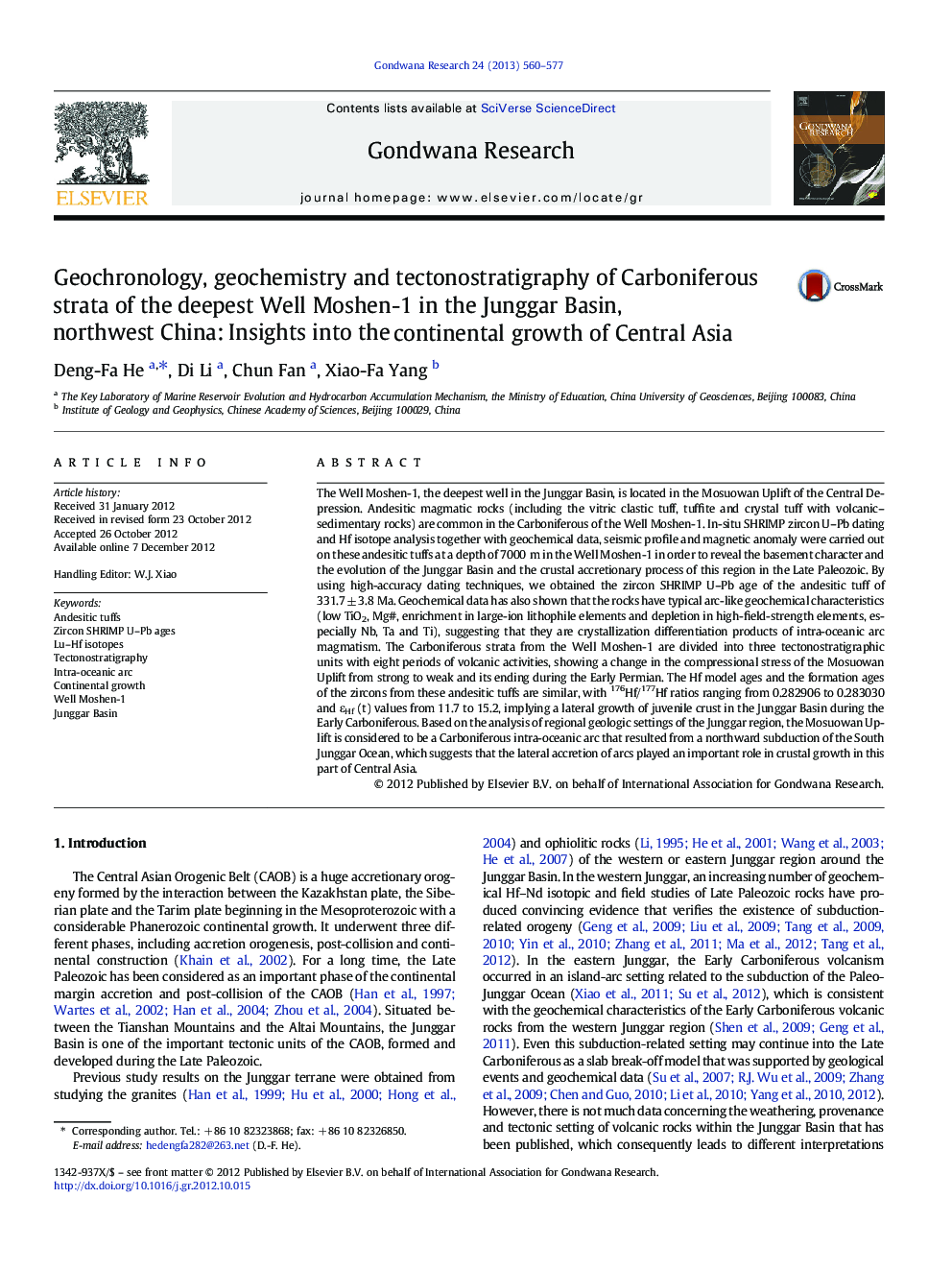| کد مقاله | کد نشریه | سال انتشار | مقاله انگلیسی | نسخه تمام متن |
|---|---|---|---|---|
| 4727313 | 1356369 | 2013 | 18 صفحه PDF | دانلود رایگان |

The Well Moshen-1, the deepest well in the Junggar Basin, is located in the Mosuowan Uplift of the Central Depression. Andesitic magmatic rocks (including the vitric clastic tuff, tuffite and crystal tuff with volcanic–sedimentary rocks) are common in the Carboniferous of the Well Moshen-1. In-situ SHRIMP zircon U–Pb dating and Hf isotope analysis together with geochemical data, seismic profile and magnetic anomaly were carried out on these andesitic tuffs at a depth of 7000 m in the Well Moshen-1 in order to reveal the basement character and the evolution of the Junggar Basin and the crustal accretionary process of this region in the Late Paleozoic. By using high-accuracy dating techniques, we obtained the zircon SHRIMP U–Pb age of the andesitic tuff of 331.7 ± 3.8 Ma. Geochemical data has also shown that the rocks have typical arc-like geochemical characteristics (low TiO2, Mg#, enrichment in large-ion lithophile elements and depletion in high-field-strength elements, especially Nb, Ta and Ti), suggesting that they are crystallization differentiation products of intra-oceanic arc magmatism. The Carboniferous strata from the Well Moshen-1 are divided into three tectonostratigraphic units with eight periods of volcanic activities, showing a change in the compressional stress of the Mosuowan Uplift from strong to weak and its ending during the Early Permian. The Hf model ages and the formation ages of the zircons from these andesitic tuffs are similar, with 176Hf/177Hf ratios ranging from 0.282906 to 0.283030 and εHf (t) values from 11.7 to 15.2, implying a lateral growth of juvenile crust in the Junggar Basin during the Early Carboniferous. Based on the analysis of regional geologic settings of the Junggar region, the Mosuowan Uplift is considered to be a Carboniferous intra-oceanic arc that resulted from a northward subduction of the South Junggar Ocean, which suggests that the lateral accretion of arcs played an important role in crustal growth in this part of Central Asia.
Figure optionsDownload as PowerPoint slideHighlights
► Andesitic tuff of 331.7 ± 3.8 Ma from the deepest well in Junggar Basin is defined.
► The Carboniferous andesitic tuff formed in an island arc environment.
► Three units with eight periods of volcanic activities were recognized.
► Lateral accretion of arc played an important role in crust growth of Central Asia.
Journal: Gondwana Research - Volume 24, Issue 2, September 2013, Pages 560–577